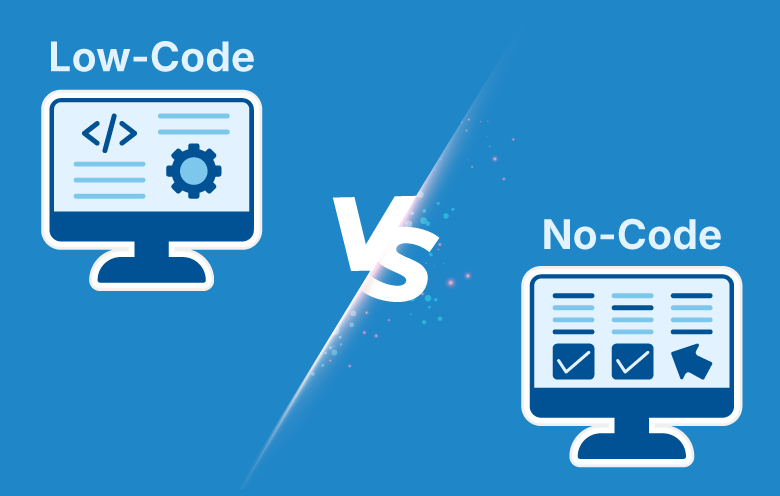Staying abreast of the latest frameworks is not just a choice – it’s a strategic imperative in the ever-evolving landscape of web development. As businesses strive to create robust, scalable, and user-friendly web and SaaS applications, the choice of a web framework becomes pivotal. These frameworks provide the scaffolding, tools, and conventions necessary to streamline development, enhance productivity, and deliver exceptional user experiences.
A few facts about web and SaaS development frameworks as per MarkWide Research:
- Open-source web frameworks are becoming increasingly popular because of their flexibility, affordability, and robust community support.
- Incorporating artificial intelligence (AI) and machine learning (ML) into web frameworks is a prominent trend in the current market.
- The worldwide market for web framework software is anticipated to experience significant growth from 2024 to 2032.
What is a web framework?
Before we delve into the specifics, let’s clarify what a web framework is. Essentially, a web framework is a software platform that accelerates web application and website development. It offers a treasure trove of pre-built components, code snippets, and complete application templates. These frameworks are essential because they help you with:
- Increased traffic
- Speed and efficiency
- Error reduction
- Background details
Frontend vs. backend frameworks
Understanding the distinction between frontend and backend frameworks is crucial:
Frontend frameworks:
- These frameworks deal with the visible part of your website – the user interface (UI) and user experience (UX).
- They encompass UI/UX design, SEO optimization, performance enhancements, and reusable templates.
- Notable frontend frameworks include React.js, Angular.js, and Vue.js.
Backend frameworks:
- Backend frameworks operate behind the scenes, ensuring seamless website functionality.
- They handle database management, security, URL routing, site architecture, and server-side operations.
- Prominent backend frameworks include Django, Flask, and ASP.NET Core.
Not to miss: How can JavaScript revolutionize your backend with the top frameworks
Some of the most popular web frameworks and their market share:
| Technology | Websites | Market share |
|---|---|---|
| Microsoft ASP.NET | 2,540,090 | 52.28% |
| Ruby on Rails | 580,521 | 11.95% |
| Next.js | 243,831 | 5.02% |
| AngularJS | 144,164 | 2.97% |
| Express | 201,002 | 4.14% |
| JSP | 77,931 | 1.68% |
| Vue.JS | 423,263 | 3.45% |
| Django | 72,722 | 1.57% |
Criteria while selecting the right web framework for your project to make informed decisions:
1. Project requirements and goals:
- Understand your project’s specific needs. Are you building a simple website, a complex web application, or a SaaS platform? Different frameworks cater to different use cases.
- Consider scalability, performance, and security requirements. Some frameworks excel in handling high traffic, while others prioritize ease of development.
2. Technology stack and expertise:
- Evaluate your team’s expertise.
- Consider the compatibility with your existing technology stack. For instance, if you’re using a specific database or cloud service, ensure the framework integrates seamlessly.
3. Community and support:
- Adopting this approach helps businesses minimize downtime by leveraging community support from technology providers.
- Partnering with providers that enable community assistance ensures smoother operations and quicker resolution of technological challenges.
4. Performance and speed:
- Assess the framework’s performance benchmarks. How efficiently does it handle requests, database queries, and caching?
- Consider factors like load time, rendering speed, and overall responsiveness.
5. Flexibility and customization:
- Some frameworks provide rigid structures, while others allow more flexibility. Decide whether you need a framework that enforces conventions or one that lets you customize extensively.
- Look for extensibility options – can you easily add plugins or third-party libraries?
6. Documentation and learning curve:
- Well-documented frameworks save development time. Clear documentation helps developers understand features, APIs, and best practices.
- Consider the learning curve. Is the framework beginner-friendly, or does it require specialized knowledge?
7. Ecosystem and third-party integrations:
- Explore the ecosystem around the framework. Are there plugins, themes, and tools available?
- Check if the framework integrates seamlessly with other services (e.g., payment gateways, analytics, or authentication providers).
8. Long-term viability and trends:
- Research the framework’s adoption rate and longevity. Is it gaining popularity or declining?
- Avoid frameworks that are outdated or losing community support.
9. Testing and debugging capabilities:
- Consider built-in testing features. Does the framework support unit testing, integration testing, and debugging tools?
- Robust testing capabilities lead to more reliable applications.
10. Cost and licensing:
- Some frameworks are open source, while others require licensing fees. Evaluate the cost implications.
- Factor in not only the initial development cost but also ongoing maintenance and updates.
Navigate the web landscape efficiently with full stack and mobile app development services. Remember that the right framework depends on your specific context, team, and project goals. Take the time to research, experiment, and choose wisely – the success of your web or SaaS application hinges on this decision.
Some of the top web frameworks for 2025:
React.js
Developed and maintained by Meta, previously known as Facebook, React.js is the most popular JavaScript library used for building user interfaces. This library emphasizes creating reusable UI components which makes the development of complex applications efficient and sustainable.
React.js is also popular due to its virtual DOM that optimizes performance by selectively updating parts of the UI. Its flexibility enables integration with other libraries and frameworks to fit any web application – either a single-page application or large-scale web application.
Angular.js
Google created Angular.js, an agile JavaScript framework, for dynamic web applications. It helps developers to extend the syntax of HTML to express all the application components visibly and concisely. The two-way binding of Angular.js guarantees synchronization between the view and model, which minimizes manipulation of the DOM. Though Angular.js has now been replaced by Angular (a totally revamped version), it is still important for legacy projects or developers who want mature solutions.
Vue.js
Vue.js is a progressive JavaScript framework which has a balance between simplicity and power, appealing to experienced developers and beginners. Its core library focuses primarily on the view layer, with an ecosystem that supports other more advanced features like state management and routing.
In Vue, reactive data binding and component-based architecture give high efficiency in building dynamic user interfaces. The popularity of the framework is owed to its ease of integration and detailed documentation.
Django
Django is a high-level Python web framework that facilitates rapid development and clean, pragmatic design. Django offers extensive tools that include authentication, URL routing, ORM, as well as a strong admin panel.
With its features to protect against SQL injection and cross-site scripting, Django has become a reliable choice for applications that require greater dependability. Django’s scalability and applicability have led it into various domains, from managing content to scientific computing.
Express.js
Express.js is a minimalist and flexible web application framework for Node.js. It is broadly used in building APIs and server-side applications. Because of its unopinionated nature, developers can build customized applications.
By using middleware, Express.js makes handling HTTP requests, responses, and routing a lot easier. Lightweight in structure and compatible with most other Node.js tools, it has become an indispensable part of full-stack JavaScript development.
ASP.NET Core
ASP.NET Core, a product of Microsoft, is a cross-platform high-performance framework for building modern web applications. Being an evolution of ASP.NET, it ensures better flexibility and modularity.
It supports cloud-based applications, microservices architecture, and is easily deployable with tools like Visual Studio. It also features built-in dependency injection and robust security procedures that meet the standards of professional-grade application development.
Spring
Spring is a powerful framework for developing enterprise Java applications. It provides a full-fledged programming and configuration model for modern Java-based applications. Its modular architecture, in particular the Spring Boot project, makes it easy to develop stand-alone, production-grade applications.
Spring stresses dependency injection to support loose coupling between components. It also provides deep support for web services, data access, and security, thus becoming the first choice for large-scale and secure enterprise systems.
Node.js
Node.js is an open source, server-side runtime environment built on Chrome’s V8 JavaScript engine. It allows developers to run JavaScript on the server to bridge the gap between the front-end and the back-end.
It is known for non-blocking and event-driven architecture. This makes it great for concurrency with connections, making it perfectly suited for real-time applications like chat applications or streaming services. Also, its package ecosystem, (Node Package Manager) adds more flexibility.
Next.js
Next.js is a React-based framework used to create modern web applications without any hassle. It helps deliver server-side rendering, and static site generation and enhances application performance along with its SEO substantially.
Next.js has built-in TypeScript, API routes and CSS modules to facilitate a faster development environment. Its ability to focus on the productivity and scalability of the developer has made it an ideal framework to develop high-grade, production ready React applications.
Suggested: Top full stack development trends in 2025
Real-world case studies where organizations leveraged these frameworks to achieve remarkable outcomes:
Facebook (React.js):
Project: Facebook’s web and mobile applications.
Outcome:
- React.js enabled Facebook to build a highly responsive and dynamic user interface.
- The virtual DOM significantly improved rendering performance, even with massive amounts of content.
- Facebook’s development teams benefited from the component-based architecture, allowing them to maintain and scale their applications efficiently.
Netflix (Vue.js):
Project: Netflix’s user interface for streaming content.
Outcome:
- Vue.js provided a flexible and lightweight framework for creating interactive components.
- Netflix’s development teams appreciated Vue’s simplicity and ease of integration.
- The framework contributed to faster load times and smoother transitions, enhancing the overall user experience.
Instagram (Django):
Project: Instagram’s backend services.
Outcome:
- Django’s adherence to the Don’t Repeat Yourself (DRY) principle streamlined development.
- Instagram achieved robust security features, crucial for protecting user data.
- The built-in Object-Relational Mapping (ORM) facilitated database management, allowing Instagram to scale seamlessly as its user base grew.
Uber (Express.js):
Project: Uber’s backend APIs.
Outcome:
- Express.js, being minimalistic, allowed Uber to create lightweight APIs.
- The flexibility of middleware and routing made it easy to handle various endpoints.
- Uber’s real-time ride tracking and booking services rely on Express.js for efficient server-side operations.
Pinterest (Flask):
Project: Pinterest’s content discovery platform.
Outcome:
- Flask’s modular design suited Pinterest’s need for extensibility.
- The lightweight framework allowed rapid prototyping and experimentation.
- Pinterest leveraged Flask to build features incrementally, ensuring a smooth user experience.
Navigate the web landscape more efficiently with full stack development services!
The world of web development is a dynamic canvas where frameworks paint the future of digital experiences. React.js, Vue.js, Django, Express.js, and Flask stand as pillars of innovation in enterprise app development, each with its unique strengths.
Softweb Solutions has best-in-class full stack developers to assist you whether you want to craft sleek user interfaces, build robust APIs, or ensure seamless server-side operations. We help you choose the right framework that can propel your success in the ever-evolving digital landscape. Hire full stack developers to embrace these technologies, experiment fearlessly, and continue shaping the web of tomorrow.



